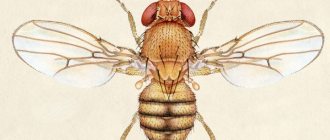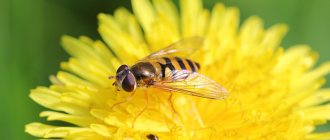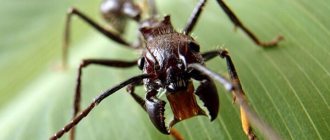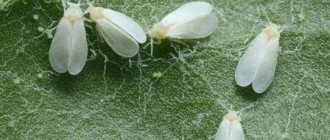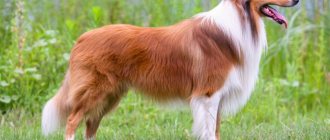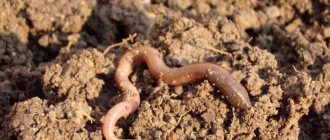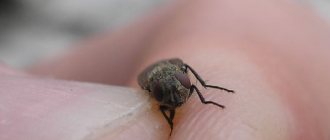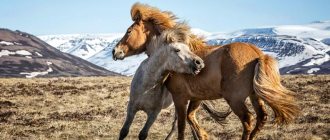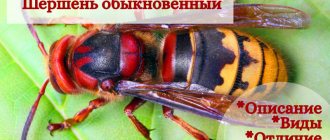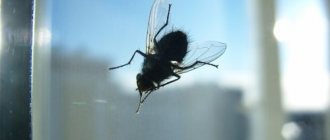Many people have encountered this insect more than once in their garden or while walking in the park. Initially, you might think that a wasp or a bee landed on the flower. But when a person or animal approaches, when the frightened insect rises up, you can notice the difference. The hoverfly does not fly away immediately, it hangs in place for a while. At the same time, you can hear the sound that the insect's wings make. This sound is somewhat similar to the soft murmur of water. Most likely, the name of the insect is associated with this sound.
Peculiarities
Hover flies resemble menacing wasps and bees in appearance. Thus, the insect has adapted during evolution. Birds, seeing an insect with such coloring, do not try to “dinner” with such prey.
Hover flies are very interesting insects. In flight, their virtuosity is inimitable. The insect is capable of flying for a long time. They fly very fast. And at the same time, if necessary, they can freeze in one place.
Male hover flies are engaged in protecting “their” territory. They drive away other “claimants” to the territory by hovering in the air for a long time. The opponent, seeing that the area is occupied, flies to another place. Virtuoso fliers, hoverflies can remain in a state of flight for a long time. Insects can hover for a long time and then suddenly change direction of flight. Even the mating process is carried out by many individuals in flight.
The hoverfly's ability to stay in the air for a long time is due to the structural features of its wings. One pair of wings performs normal functions, the other pair has been deformed in the process of evolution, turning into club-shaped halteres. This organ helps the insect maintain balance and control the direction of flight.
In nature, there are several species of hoverflies. Distributed in:
- Europe;
- Central Asia;
- North America.
Sometimes these insects are found even in the subarctic zone.
Adaptation of organisms to environmental factors
Any living organism is affected by natural factors. Inanimate nature includes: temperature, day and night, seasons, soil characteristics, landscape, chemical composition of air and water, noise, radiation. Organisms adapt to this, but cannot influence these conditions, which are called abiotic factors.
Adaptations to changes in nature by humans (anthropogenic factor) are of no small importance for the survival of animals. Being in natural communities, all living inhabitants of the planet are divided into groups with similar signs of adaptation to a particular environmental factor. These changes can be expressed both externally and internally, with a change in the nature of behavior.
For example, body temperature depends on weather conditions in most representatives of the animal world. These are cold-blooded animals. They react either by decreasing or increasing their metabolic rate. When they slow down, they experience suspended animation, which helps conserve energy. In warm-blooded species, the temperature is always constant and does not affect metabolism. There are predators that hunt during the day, and there are those that only come out at night. Pets are active mainly during the daytime.
Benefits and harms
Hoverflies can be classified as predatory insects, as they feed on plant foods and insect pests. Adults feed on pollen and plant nectar. Therefore, hover flies can be classified as pollinating insects. Insects give the greatest preference to umbelliferous and asteraceous plants. They do not disdain a variety of meadow grasses, fruit trees and shrubs.
The basis of insect nutrition is sugar, which is contained in nectar. It is he who gives the hoverflies energy. And pollen provides the protein necessary for the growth and development of eggs.
The hatched larvae differ in their feeding habits. Some feed on rotting wood, while others live and develop in water. There are exotic species that eat and process manure. Most of the larvae prefer aphids. Therefore, they can be considered true protectors of gardens. Many amateur gardeners specially plant the trunk circles of berry and fruit trees with umbrella crops in order to attract hoverflies to the garden to prevent aphid attacks.
But there are varieties of hover flies that feed on lily crops. It is these specimens that can cause damage to the crop by eating the bulbs of flower crops and damaging onions and garlic.
An interesting insect is the hoverfly. Despite the fact that some species can eat cultivated plants, in general they are assistants to humans. In remote mountainous areas, where there is a shortage of bees and wasps, they pollinate plants and increase their productivity. Great help is provided by eating aphids and spider mites in the garden. This protects the trees from pests. And it’s just interesting to watch them move in the air.
In the summer, gardeners can encounter many insects on their plots, and sometimes, when they see a fly with a characteristic black and yellow color that makes a specific buzzing sound, they may mistake it for a bee or.
In fact, this is not so: the hoverfly, unlike bees, is a dipteran species and leads a completely different way of life. The peculiarity of these creatures is that some species can be malicious pests for cultivated plants, while others can be assistants in the destruction of other pests.
Varieties
The following types of these flies are common in our country:
- Eristalis is a species of aquatic hoverfly. The larvae scan the muddy bottom of pools of moldy water in search of food. They all have a “tail,” a special breathing tube that allows them to breathe underwater.
- Temnostoma vespiforme is distinguished by its external resemblance to a wasp. This species is called a wasp. The fly has a characteristic striped color. The larvae feed on rotten hard wood. Front sight size up to 18 mm.
- Chrysotox resembles a large hornet. The abdomen is convex with yellow stripes interrupted in the center. The adult size ranges from 13 to 18 millimeters. One feature is a brown tint on the front of the wings.
- Eristalis is a bee species. The size of the fly is up to one and a half centimeters. The body is covered with short hair. The color is dark. There are narrow yellow stripes on the abdomen. Known as the bee.
- Ancient Delia larvae damage onions and garlic. The adult color is dirty gray. Size up to 0.7 mm. Females lay eggs in the axils of leaves. The larvae penetrate the rhizomes and eat them, causing rot.
Appearance and life cycle
The hoverfly larva is similar in appearance to a green leech and has extreme mobility. The color of individuals can vary, in some cases it is light yellow or even pinkish. The skin of the worms is so thin that you can see the internal organs through it.
The body of the hoverfly pupa is drop-shaped and the outer shell resembles amber. Wintering pupae have a brown tint, summer ones are light with a yellowish tint.
The body of an adult is both elongated and quite massive; the size of the hoverfly varies from 5 to 25 mm. The main feature of the insect is the absence of a covering of hard hairs, which are characteristic of most types of flies - its body is covered with fine fluff.
The color of the adult pest is dark, sometimes almost black, and there are distinct yellowish-red stripes on the back and abdomen - this description of the appearance resembles bees or wasps. This coloring was not given to the individuals by chance: many birds, mistaking them for bumblebees, try to stay away from them for fear of being stung.
The special arrangement of the wings helps the hoverfly hover in the air for a long time or abruptly change the direction of flight. The flight of insects begins around the end of June and continues in the active phase for about a month.
After emerging from the pupa, individuals begin mating, and then the females begin laying eggs. Eggs are laid on foliage, stems or branches, and in some cases - directly on the ground, not far from crops used by the hoverfly for food.
The eggs develop for 8-12 days, after which the larvae are reborn, which feed for a month, and then enter the pupal phase. The new generation flies in July-September. With the onset of cold weather, the new generation of caterpillars hides for the winter.
Interesting Facts
Here are some fun facts about hoverflies:
- Mimicking bees helps flies escape insectivorous birds. The chicks hatch during the flight of the wasps. Then their parents teach them to be wary of striped insects. Hoverflies fly away as the chicks grow and are not in danger of being attacked by suspicious flies.
- Hoverflies owe their name to the characteristic sound of their wings, similar to the murmur of water.
- Male wasps remain in the air for a long time, protecting their territory and females during the mating season.
Sources
- https://beyklopov.ru/moshki/obschie/muxa-zhurchalka.html
- https://apest.ru/muhi/vidy-muh/muha-zhurchalka/
- https://stopvreditel.ru/yadovitye/muxi/zhurchalka.html
- https://vrediteli24.ru/muhi/lichinka-zharchalki.html
- https://beetlestop.ru/muha-zhurchalka/
- https://zelenplaneta.ru/muhi/lichinka-muhi-zhurchalki-vred-i-polza.html
- https://ParazitDoma.ru/drugie-parazity/muha-zhurchalka
- https://sovusadba.ru/vrediteli-i-bolezni/chem-opasna-muha-zhurchalka-dlya-ogoroda.html
Harm, benefits and features
Adult insects prefer to eat pollen and nectar, so they often live near umbrella crops, including wild ones. They love to visit flowering areas and are found near bushes.
Hoverfly larvae differ from each other in the type of food they eat: herbivorous species eat lily stems and bulbs, while carnivorous species prefer to feed on small pests: fleas, aphids, etc.
Are larvae harmful?
Harmful hoverfly larvae destroy all available crops. The insect prefers:
- daffodils;
- garlic;
- tulips;
Fly larvae often destroy flowers such as tulips
- hyacinths;
- onion;
- gladioli.
After contact with a harmful larva, the plant stops growing and developing. Withering occurs gradually. The sheets are drying.
Insect biology
The hoverfly insect family belongs to the order Diptera, unlike wasps and bees, which have two pairs of transparent wings. They are distributed throughout the globe and are found in almost all places except the desert and tundra; in Russia alone there are more than eight hundred species.
The color of insects of this family is black and yellow with slight variations observed in all species. Imago, adult hoverflies feed on pollen and nectar of plants, but the larvae of hoverflies have a wider palette of tastes.
Development
Adult insects appear in the garden in late spring. Mating of hoverflies occurs in mid-summer, and their active years last until early August. Each female is capable of laying up to two hundred white eggs. She places them on grass, plant stems, directly in the soil, and on tree branches. It depends on the type of insect. For example, the onion hoverfly, a pest of this crop, lays eggs on onion feathers. After ten days, the eggs hatch into larvae.
Larva
All fishermen and their wives are well aware of the larva of the blowfly - maggot. The hoverfly larva is the same maggot, only slightly smaller in size, only a centimeter long.
The larvae feed depending on the species:
- predators - aphids and;
- herbivores - bulbs;
- aquatic - detritus;
- woody - dead plant tissue, including manure.
Based on what has been said, we see that these insects are mainly useful, but there are also garden and vegetable pests.
The nature of the adaptation of organisms
Selection by nature leaves only the most adapted alive. But the slightest changes in the environment can make those devices that served well before useless or even harmful.
As a result, those organisms that managed to adapt faster survive, and those who are late die out, giving the opportunity to form a new species. Such adaptations are formed over a very long time naturally and are relative, because living conditions change much faster than the necessary changes appear in animals.
Evidence for the relativity of adaptations:
- methods of protection are not universal (a poisonous snake that is dangerous for some is eaten by a mongoose or a hedgehog);
- in some cases, instinct fails (a moth flies to a light flower for nectar, but may confuse it with fire);
- an organ that is necessary in one environment is useless or harmful in another (bar-headed geese with membranes they do not need);
- fish are adapted to separate oxygen from water, but on land they cannot do this; - green insects are not visible on the grass; on clean ground they will quickly be eaten.
Types of hoverflies
The most common types of hoverflies that can be found in our gardens are useful, and only the onion one is an undoubted pest. Below are examples of the most common flies of this family:
- , in Latin "Delia antique", measures up to a centimeter in length. The eggs laid in the axils of the leaves hatch into larvae that damage the bulbs, causing them to rot.
- Aquatic hoverflies, or "Eristalis", feed near stagnant water in small natural pools and marshes. The proboscis on their body, like a diver's breathing tube, helps them breathe under the surface of the water.
- The common hoverfly is a flower fly that reaches twelve millimeters in length. Its larva can eat up to two hundred aphids per day. The common hoverfly is an excellent pollinator. The camera captured her on clover
- The wasp fly is most similar to a wasp, hence its name. Its larvae feed mainly on rotten wood, and the adult grows up to eighteen millimeters in length.
- The hoverfly is a little smaller, only one and a half centimeters long, has a darker color and, as its name suggests, resembles a bee.
Reasons for the adaptability of organisms
It has been established that individuals of the species will survive if they change faster, adapting to new environmental requirements. The emergence of new characters and the appearance of a new species is called phyletic speciation.
Today, the diversity of species has noticeably decreased compared to several thousand years ago. This is due to constant climate change, ice ages, volcanic eruptions, earthquakes, environmental deterioration, and the barbaric attitude of people. As a result, the most adapted organisms survive, and the main reason for adaptability belongs to natural selection.
Benefits and harms
As noted earlier, not all types of hoverflies are equally useful. While most of them are excellent pollinators of flowering plants, and their caterpillars are capable of destroying harmful insects, the onion hoverfly is a dangerous pest.
It damages the bulbs of such vegetable and flower plants as:
- onions;
- garlic;
- tulips;
- gladioli;
- daffodils;
- hyacinths.
Plants damaged by onion hoverfly larvae slow down their growth, sometimes wither and die. Their bulbs also often rot and do not reproduce well.
Attention! Do not confuse the onion hoverfly with the onion fly. The fly is gray and slightly smaller than a hoverfly, with a maximum body length barely reaching eight millimeters. She is active before the hoverfly for a whole month.
Examples of the fitness of organisms
The horse can run quickly with the help of wide, comfortable hooves. Felines are able to sneak up silently, retracting their claws. Birds made their bodies lighter for flight by getting rid of the bladder, one ovary, teeth and acquiring wings with different plumage.
Insects - caterpillars have adapted to become similar to a plant leaf or twig. Crocodiles have special glands near their eyes that help remove excess salt. The camel stores fat in its humps, the breakdown of which releases water. The polar bear retains heat with the help of a layer of subcutaneous fat and thick fur; wide paws allow it to walk on thin ice.
Struggle
If you notice hoverfly larvae in your bulbous plantings, you need to take immediate action. In this case, proceed as follows, using both means of destruction and preventive measures:
- Severely damaged plants are removed from the site and burned.
- The rest of the plantation is treated with conventional insecticides: Aktara, Decis, and so on.
- The planting sites for daylilies are changed annually, alternating them with other crops.
- Carrots are added to lily plants, the smell of which repels onion flies and hoverflies.
- Bulb crops are also saved by early planting, so that by the time the pests fly out they are already strong enough.
- Preventive treatment with odorous substances is used: tobacco dust, mothballs, ash, hot pepper and the like.
- Mulching and loosening the soil prevents its compaction, which is a barrier for pests.
After harvesting bulbous crops, if there is a suspicion of hoverfly infestation, it is advisable to treat the soil with a solution of copper sulfate.
In the summer, in the garden or vegetable garden you can often find small flies, very similar to wasps or bees. They just don't behave like stinging insects. Frightened, they will not attack you, but will fly a little further. Meet the hoverfly - a representative of the syrphid family, interesting dipterous insects. Not everyone knows that these insects do not sting, but only disguise themselves as dangerous bees.
Prevention
When insects are killed, crops can be damaged, especially if chemicals are used. To prevent the appearance of the parasite, it is recommended to take a number of preventive measures:
- the soil must be loosened to prevent compaction;
- the harvested crop is dried in the sun for 3-4 days;
- landing sites must be changed annually;
- seedling seeds are sprinkled with chalk - 20 g per 1 kg.
- Before planting, onion sets are dipped in a solution of potassium permanganate;
Simple preventive measures can help reduce the likelihood of hoverflies and their larvae.
Biology of hoverflies
Hoverflies, due to the peculiarities of their evolution and similarity with wasps, have spread over most of the globe. They are found everywhere except hot deserts, tundras and, of course, Antarctica. Entomologists count about 6 thousand species of these insects, of which more than 1.5 thousand are found in the Palearctic, 800 in Russia, and 2 species were found even in the subarctic zone.
How to distinguish syrphid from stinging insects
Although the bee fly is similar to wasps and bees, it is absolutely harmless. Below are the signs by which the hoverfly can be distinguished from dangerous insects:
- Syrphid flies are dipterous insects, so the presence of only one pair of wings is the first difference from bees, which have four wings.
- The fly's wings are larger and wider.
- The ability to “hover” in the air and suddenly change direction of flight. This happens thanks to the halteres - a reduced pair of wings.
- A fly has thinner limbs than a bee, and plant pollen does not accumulate on them.
- There are no hard hairs on the body of the hoverfly, but there is fine fluff, like a bumblebee.
- Wasps are non-social insects. Individual individuals live on their own and group only during the mating period.
Reproduction and development
At the end of June, after wintering, an adult wasp fly emerges from the pupa. After mating, females lay eggs and continue to fly until the end of July. Insect eggs develop in the soil near lily and umbrella plants or on the branches of bushes and trees.
A few days later, leech-like larvae up to 1 cm long emerge from the eggs. They have a greenish, pale yellow or pinkish tint. The larvae feed and grow for about a month, after which they pupate. At the end of July - beginning of September, adult flies emerge and lay eggs again. The second generation develops to the pupal stage and goes to winter.
Nutrition
The diet of adult hoverflies, like bees, consists of flower nectar and pollen. Therefore, insects can be found near the flowers of fruit trees, berry bushes and in the garden near umbrella plants.
The larvae, depending on the species, differ in the way they feed. Among them there are vegetarians, predators and saprophages that eat decaying remains. Adherents of plant foods gnaw the stems and bulbs of lilies. Aquatic types of flies dive to the bottom of reservoirs and eat the dendrite. Some exotic representatives of hoverflies will not refuse to feast on dung and decaying wood, while others live in symbiosis with ants, feeding on their reserves.
Predatory larvae are the worst enemies of spider mites, aphids and other small insects, eating not only adults, but also their eggs. It is interesting to watch the larvae hunt for aphids. The leech-like larva crawls along the stems, and when it finds an aphid, it stops and raises the front part of its body (like a snake), swings and attacks its prey. Then the larva sucks out the contents of the aphid's body, leaving only the chitinous shell. In a day, a voracious fly larva can eat several hundred aphids.
Mimicry
As already mentioned, hoverflies are very similar in appearance to stinging insects: wasps, bees, bumblebees. Hoverflies appear to camouflage themselves, and their black and yellow striped coloring helps them do this. But upon closer inspection you can see the difference:
- they are smaller than wasps, bees, etc. (with the exception of particularly large species);
- hoverflies have much shorter antennae (for example, a wasp has antennae up to 1 cm);
- they have 1 pair of wings, while the spiny ones have 2.
But even with these small differences, nothing prevents the beetles from feeling quite comfortable and bold in nature: their external imitation (mimicry, from the English word mimicry - camouflage, imitation) of dangerous stinging insects is so believable that few birds risk attacking them, especially if I already had a sad experience of contact with a wasp. But all this is despite the absolute harmlessness and even some defenselessness of the hoverfly.
Nature has endowed these flies with such a coloring that they are not afraid of enemy attacks. Consequently, there are many more popular names for hoverflies: bee, wasp, wasp fly and so on
These mobile dipterous insects with a body color reminiscent of the body color of wasps are easy to find in temperate latitudes. But, taking a closer look at the hoverfly (Diptera) of the family Syrphidae, you understand: this is a real fly. A predatory insect whose larva feeds on both plants and other parasites.
Biologists know about six thousand species of hoverflies. Most of them live in North America and Eurasia (with the exception of Central Asia). Two more species live in the subarctic zone. In Africa, South America and Australia, these insects are practically absent.
Main activity of the honey bee
A hive is like a big house in which one friendly family lives. An environment where some work, others take care of their offspring, and everything proceeds at the same level. A swarm of bees is a kind of family; responsibilities and powers are shared in it, with each one fulfilling a strictly assigned role.
One bee group can contain from 30,000 to 50,000 worker bees. The main extractors and producers of honey are worker bees. There is no limit to the efficiency of bees, no matter how much they work. All day long, from dawn to dusk, they search for flowers and carry nectar and pollen to their hives. Many people wonder how they find their way back. So there are assumptions that, firstly, they navigate by the sun and sky, as well as the landscape, remembering the road.
Another feature is that they can communicate with each other in a non-verbal way, showing where they can get enough of a large number of flowers. These acts of communication occur through a specific dance. Circling in a circle will indicate the close location of a flowering meadow, but if it sways its body, then the flowering plant is far away.
Bees also buzz for a reason; if the buzzing is loud and ringing, then there is a lot of nectar; if it is weak, then vice versa.
Biological mechanisms of adaptive coloration
This coloration is formed due to random, useful for certain environmental conditions, mutations during the existence of the population.
The appearance of butterflies with wing colors that are very similar to the background of their habitat makes it possible to remain unnoticed, reproduce and transmit this trait to the genus.
Randomly occurring mutation processes ensure that creatures unable to sting are similar to poisonous species.
Why do they bite?
So we move on to the main question of this review. Indeed, why do flies tend to bite, especially somewhere from the end of August, right up to the November frosts.
We have already partially answered the question earlier, pointing out the predatory lifestyle of these insects and their need for blood for nutrition. But this is only one side of the coin, because mosquitoes also need blood to be able to produce offspring, just like mosquitoes.
Among the reasons why flies still bite in the fall, we also note the maximum increase in the population of insects of all types in the period from August to October. That is, competition for power sources is increasing.
We should also not forget about cold weather, the approach of which forces insects to increasingly intersect with humans and stimulates them to look for suitable places for wintering or laying eggs in human habitats.
From midges
Homemade ones are an excellent way out when you can’t use chemicals because family members, small children or animals are prone to allergies. And the savings here will be significant: store-bought traps have different prices, but for preparing them at home, almost nothing special is needed, everything is always at hand.
Bait jars
Take any glass jar, place 2 tablespoons of apple cider vinegar in it (its smell is very attractive to midges), you can add some sweet drink or syrup. The jar is closed with a plastic lid or film, in which entrance holes for midges are pierced with an awl or toothpick. Insects that fly inside on the scent of the bait will not be able to get back out. As they accumulate in the trap, the jar is either thrown away, or the midges are released on the street, and the container is sterilized.
Plastic bottle
The principle of making traps from a plastic bottle is the same as when making a jar trap: flying insects should not get out.
To do this, at the level of the “shoulders” of the bottle, where its main thickness begins, the upper part is evenly cut off and inserted with the narrow neck down. The joints are taped, and there should already be food bait at the bottom. The ideal bait for midges is sweet liquids, wine or beer, and rotting fruits.
To make the process of making a trap easier for yourself, you can not bother cutting off its top part, but simply make a funnel out of paper and insert it into the narrow neck.
Wine container
Take a regular bowl or container and pour a little wine into the bottom. The smell of this midge drink is very rich, and midges will immediately smell it. In addition, wine is produced by fermentation, and fermented foods are one of the favorite delicacies of these little bores.
Add a little dishwashing liquid or just liquid soap into the wine. In such a slippery mixture, midges will not be able to stay on the surface, their wings will stick together, and the insects will begin to drown.
Plastic bag
Not the most common method, but if you perform certain actions quickly, it can work well.
Place a sweet food bait (for example, fruit that is starting to spoil) inside the bag. Wait until midges accumulate there and very quickly tie the bag into a knot. After that, take it to the trash.
The main disadvantage of this method: the midges are also quite nimble, and some of them may have time to fly out if the actions when tying the bag are not very fast. And it is not always possible or desirable to wait until insects accumulate there.
